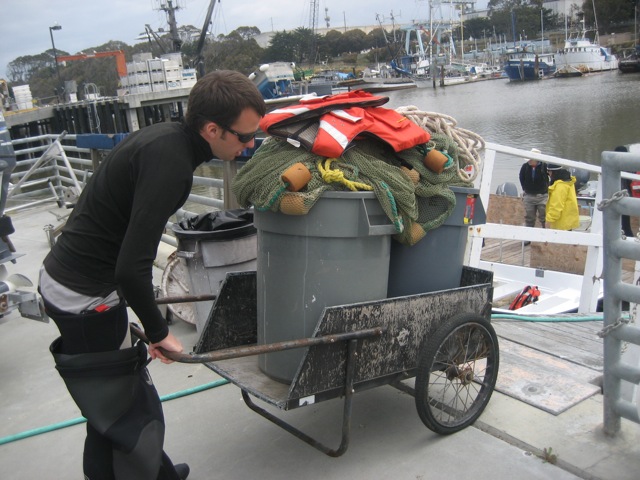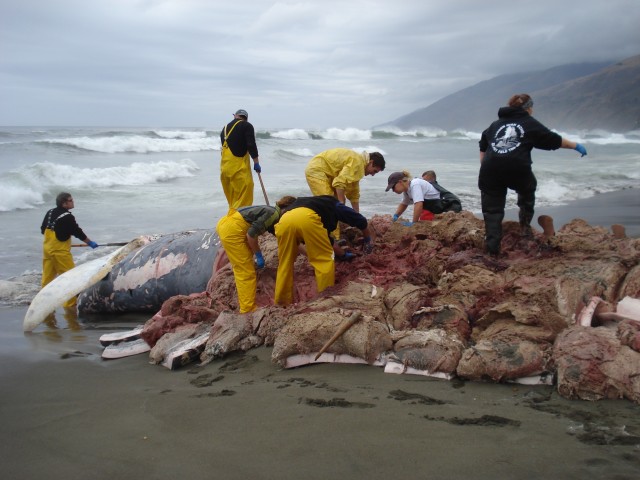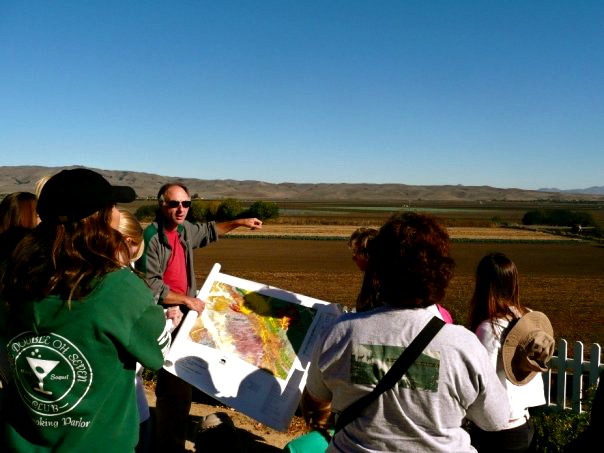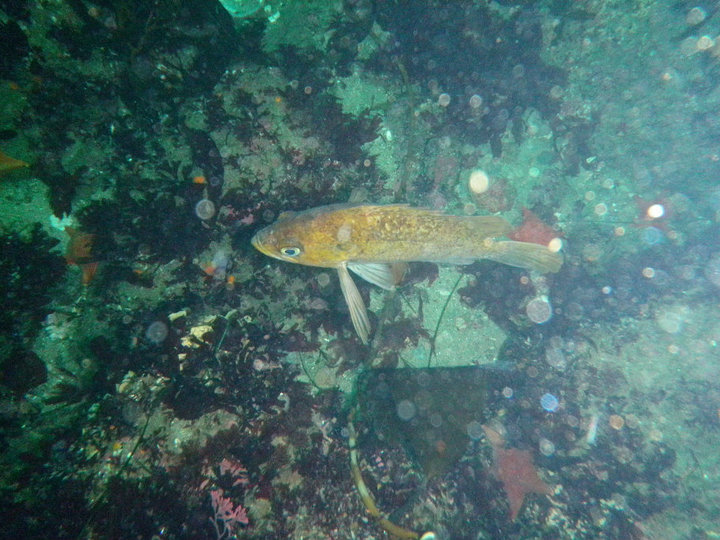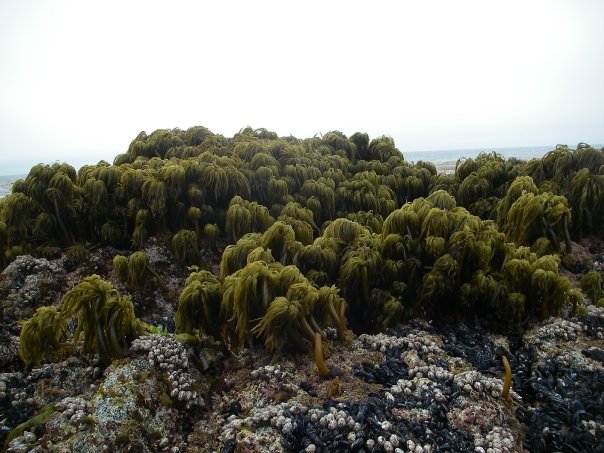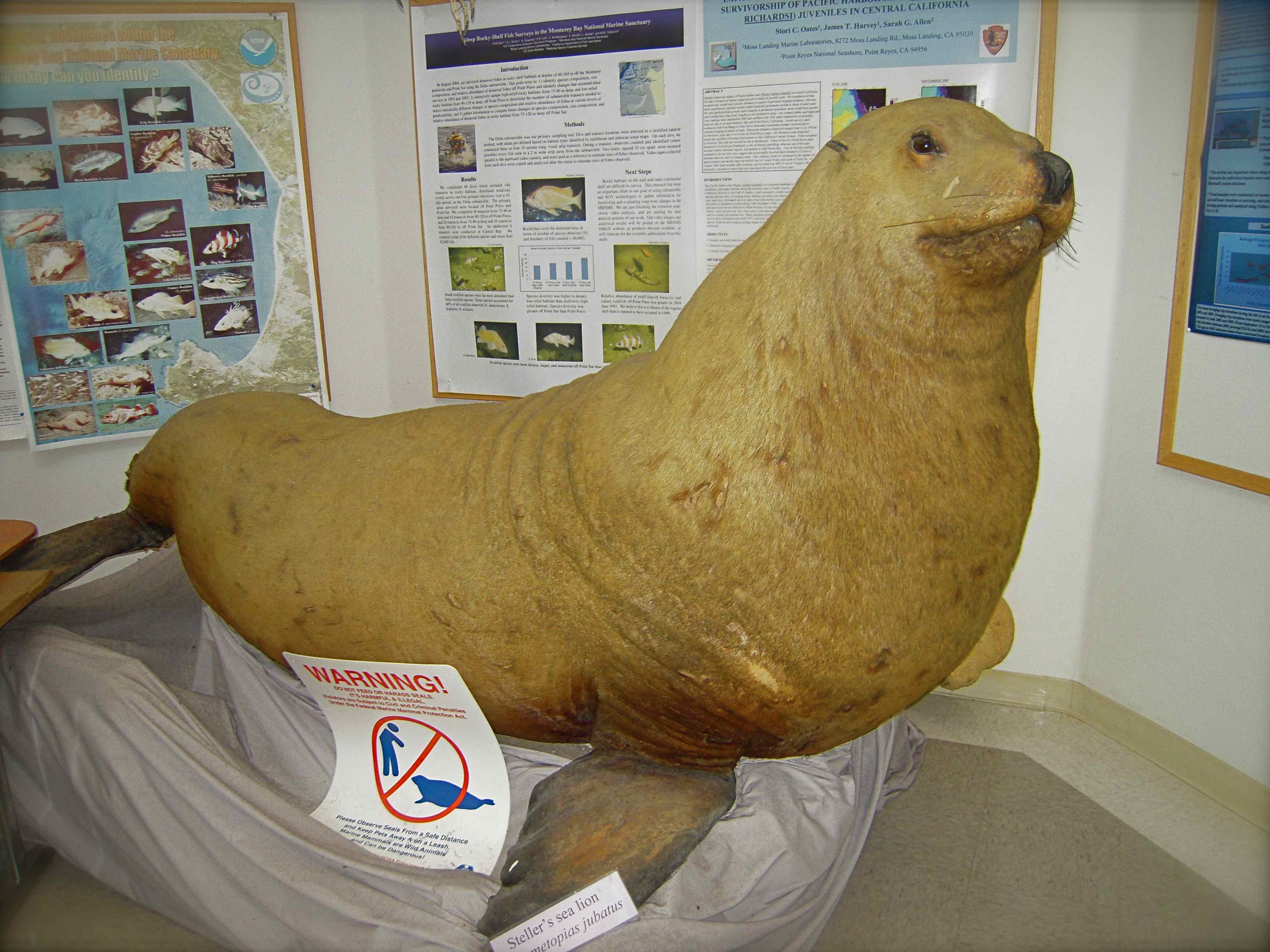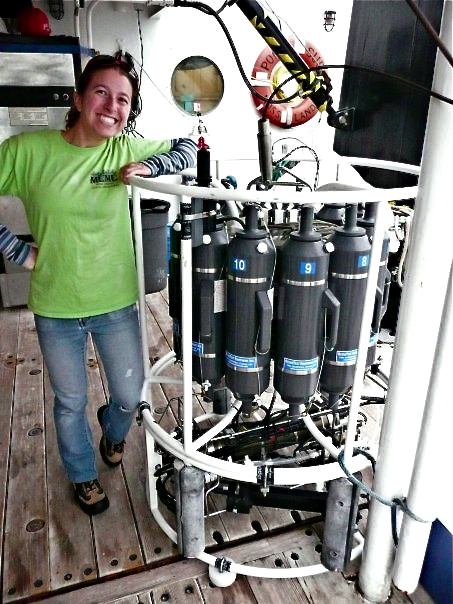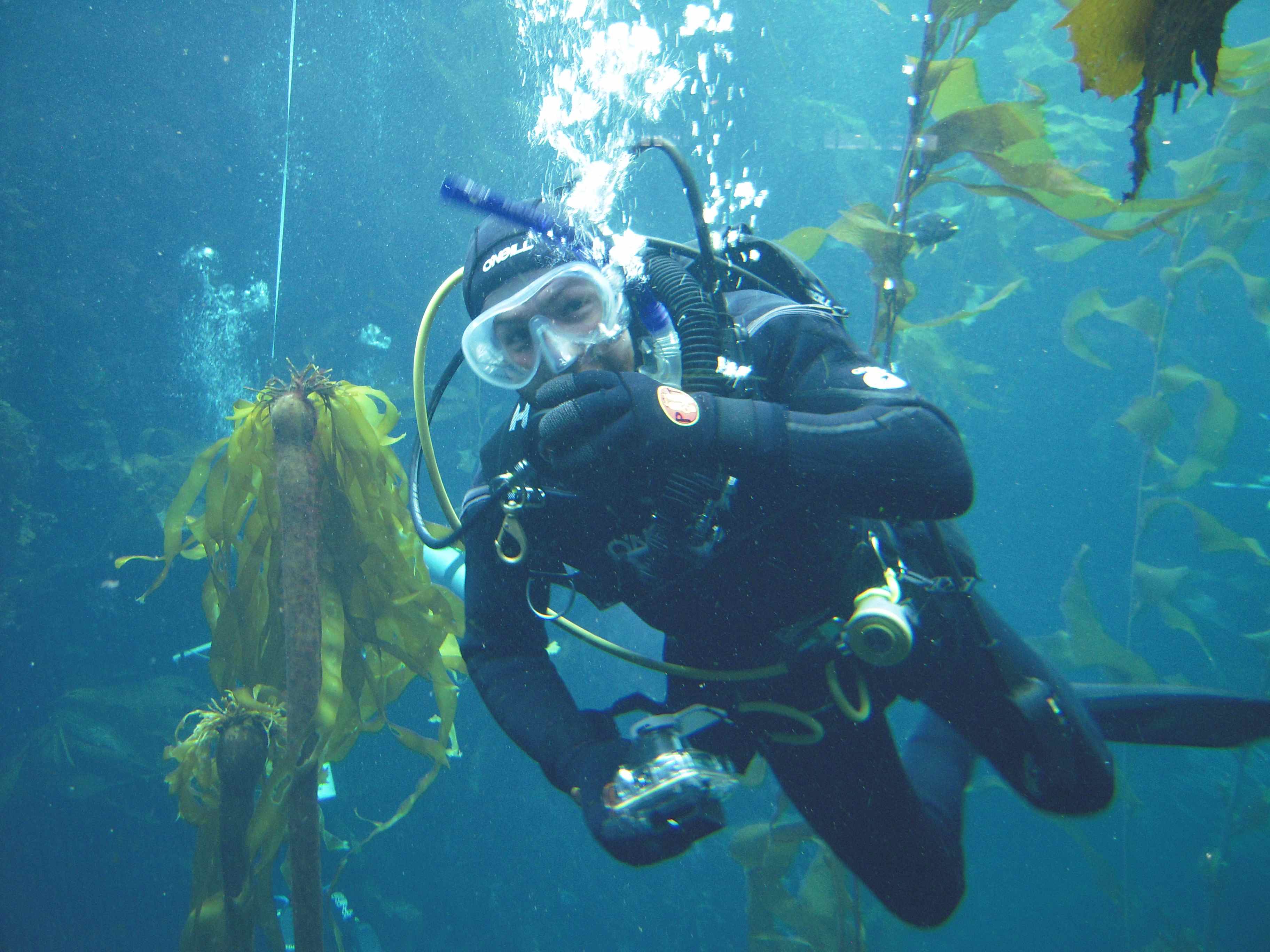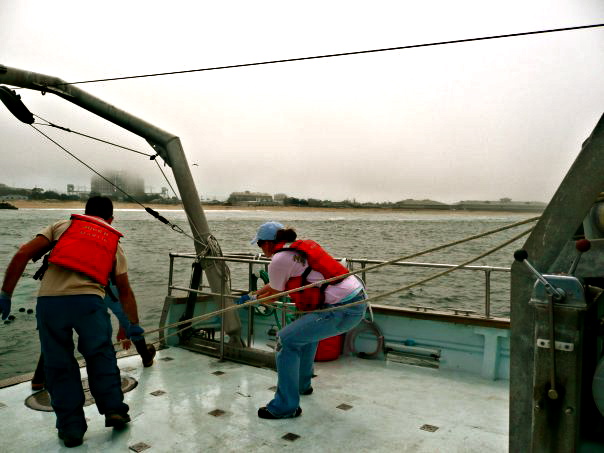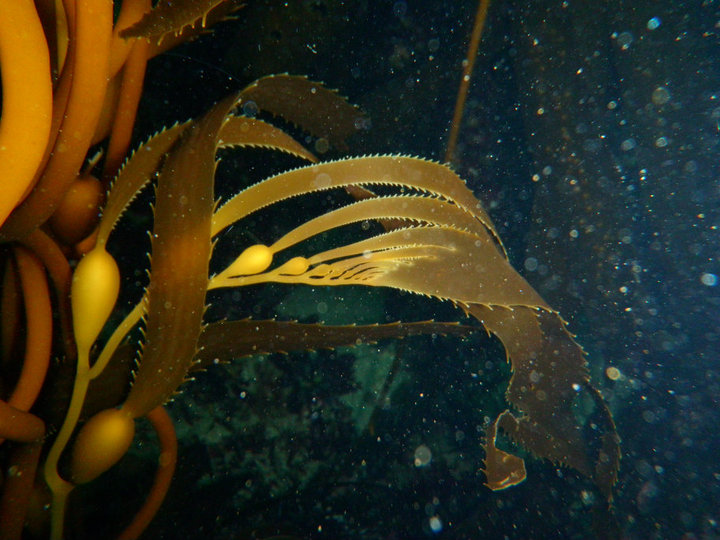
No, this isn’t a deadly weapon. But it does have a blade, or actually, many of them! This is the end of a giant kelp frond, better known as the “scimitar” blade due to its resemblance. Here, new blades are formed. As the blade grows, it slowly tears itself away from the scimitar and becomes an individual blade. You can see several new blades forming in this scimitar blade, and the ones just to the left are the newest blades that have already separated.
Does the scimitar blade look familiar to you? Well, if you’ve ever visited the Monterey Bay Aquarium then it should be! The Monterey Bay Aquarium uses the scimitar blade as part of its logo, which you can see on their website.


